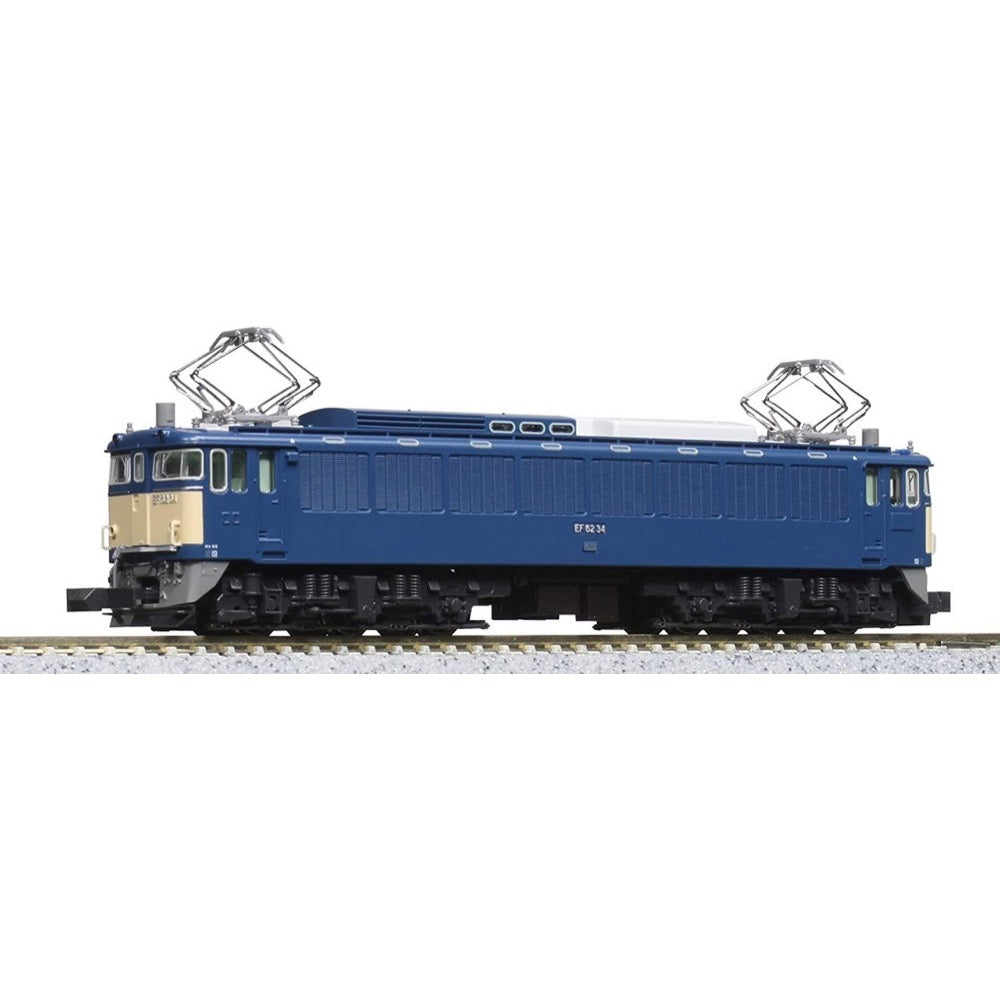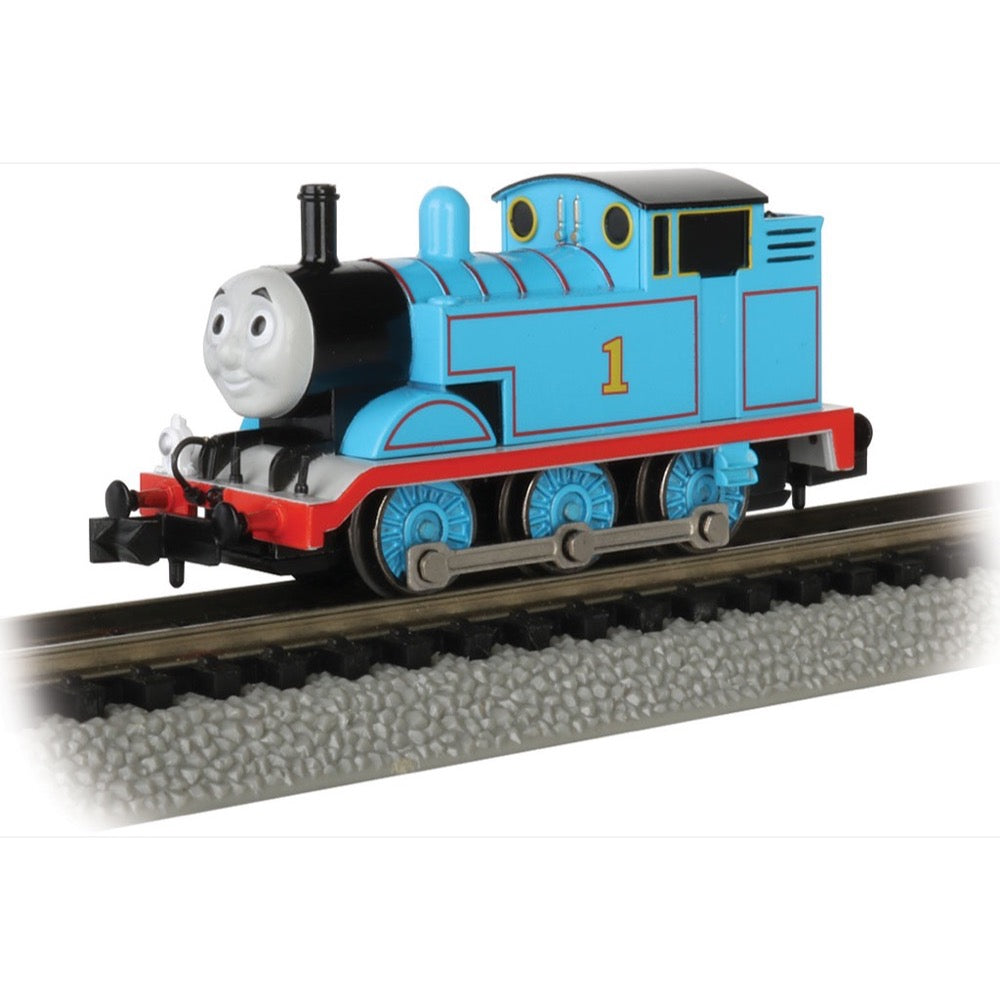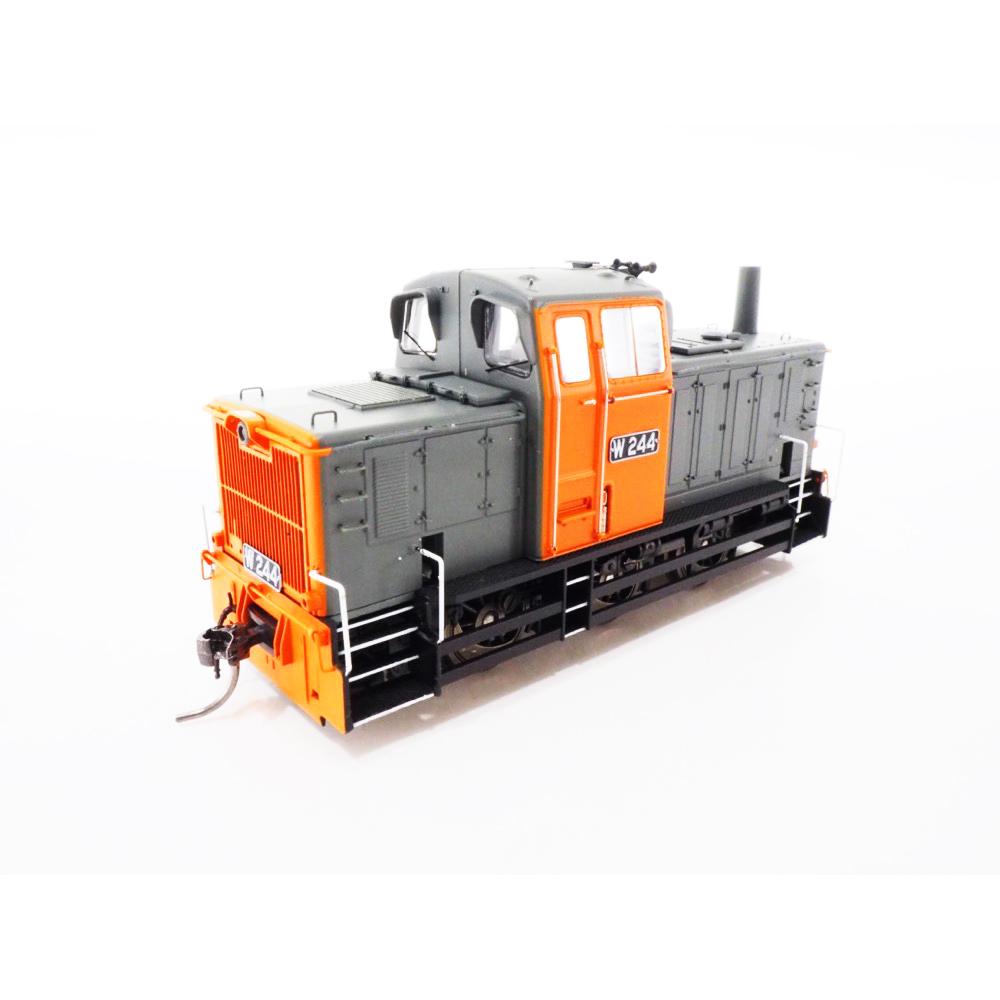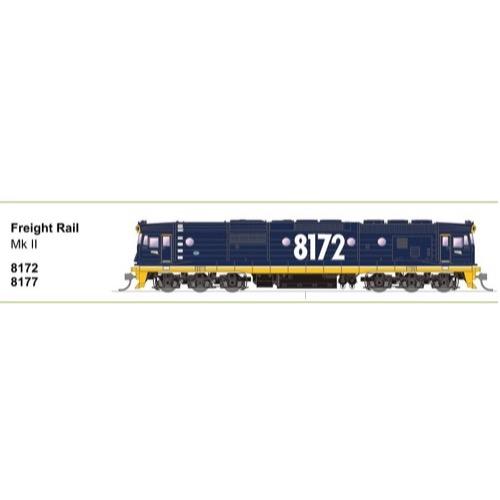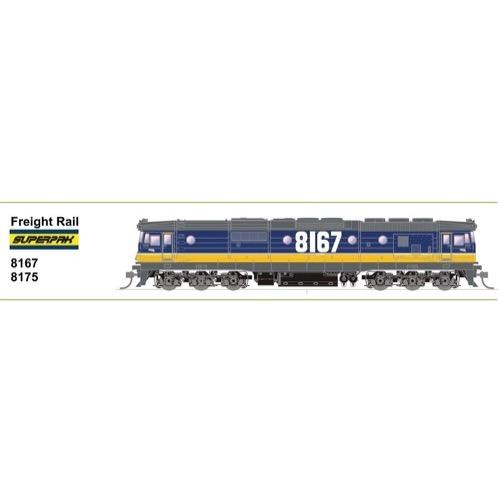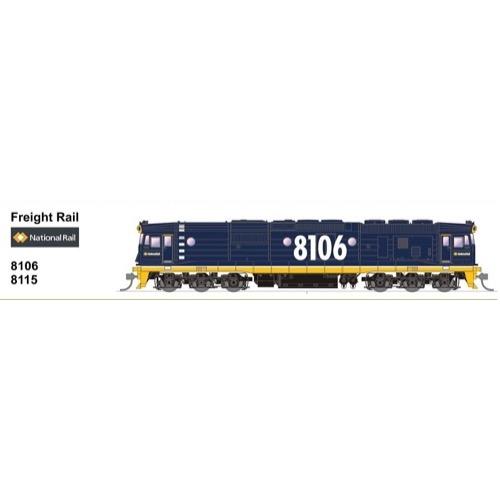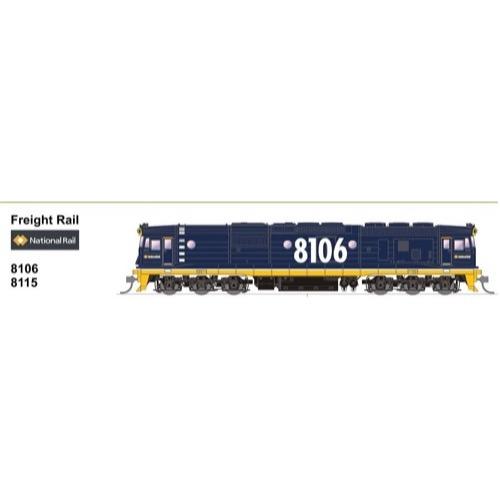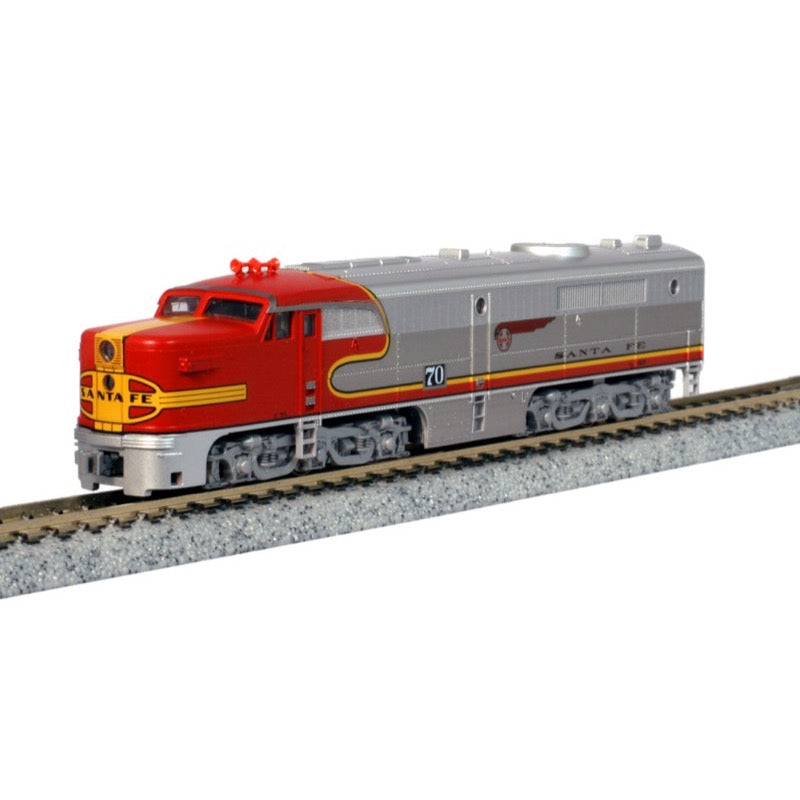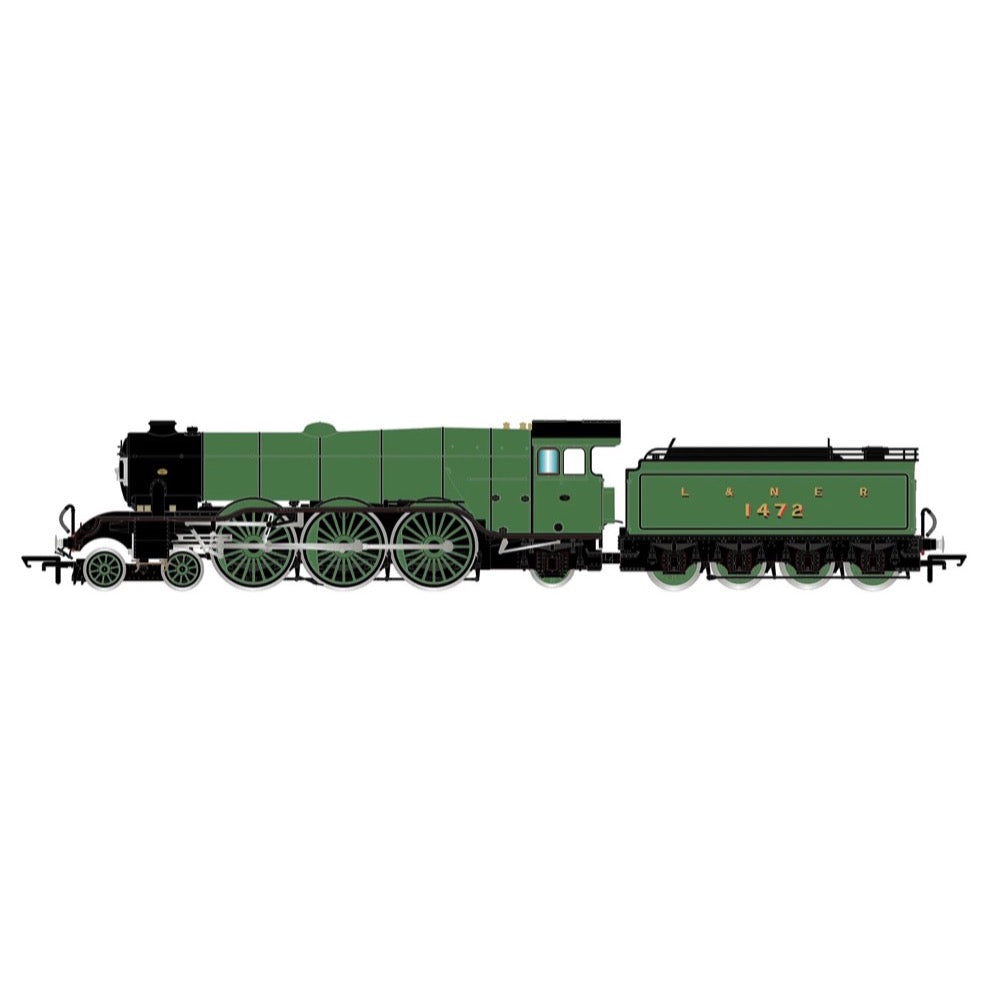
Hornby R30206 OO Hornby Dublo LNER A1 Class 4-6-2 1472 Flying Scotsman
This locomotive will be included in a bespoke box, along with a medallion featuring the Flying Scotsman centenary logo, operator, running number and year.
The largest of the constituent companies that would become the famous LNER was the GNR, and their Chief Mechanical Engineer naturally adopted the same position in the newly formed company, a man by the name of Herbert Nigel Gresley. As the brains behind the locomotive stock of the GNR, he had commissioned a new high speed passenger locomotive class to serve the GNR’s London to York main line. These became the A1 locomotive class, before a subsequent rebuild gave them the designation of the A3 class. One such example of this new and powerful class was named after the 10:00am service between London and Edinburgh, the named Special Scotch Express, or as it was renamed in 1924 the Flying Scotsman.
The locomotive in question, number 1472, was originally outshopped from the GNR’s Doncaster Works as a class A1 with GNR colouring, lettering and numbering before being renumbered and named in 1924 to promote the LNER’s Flying Scotsman service. Despite its new name and number, 4472 Flying Scotsman herself did not actually pull the Flying Scotsman service until 1928, spending the first four years of its life undertaking promotional work and light duties for the LNER, such as being its star exhibit at both the 1924 and 1925 British Empire Exhibition. Relatively little of note would occur in the locomotives life and service for the next twenty years, with main changes consisting of her coupling with a corridor tender in 1928 (this allowed the locomotive to run non-stop between London and Edinburgh as the crew could be swapped via the tender mid run) before being reverted to the original tender in 1936. The game of LNER musical chairs did not stop here however, with the tender again being swapped in 1938 for a streamlined tender, with much the same appearance as a corridor tender without the corridor. Flying Scotsman would retain her streamlined tender until her withdrawal from British Railways service, numbered 60103, in 1963.
In preservation, Flying Scotsman has captured the hearts of the nation, becoming recognised by even those with less than a passing interest in railways and railway history. Under various notable owners, including Alan Pegler and Sir William McAlpine, Flying Scotsman has undertaken tours of America and Australia with mixed success and under ownership of the National Railway Museum saw a six million pound overhaul, cementing her future as a main line stalwart. Alan Pegler, the original saviour of the locomotive passed away in 2012, with his ashes being thrown into Scotsman’s firebox on the Farewell Alan Pegler rail tour between King’s Cross and York in 2018.
This Hornby Dublo model features the locomotive as it would have appeared at the time it entered LNER service in 1923. The locomotive is finished in a gleaming green paint which couples with the diecast boiler to create a finish close to that that could have been seen on the full size locomotive. The model features a strong 5 pole motor, cab detailing including crew figures, a diecast body and is DCC ready.
Specifications
- Item Length - Without Packaging (cm): 29.1
- Item Height - Without Packaging (cm): 5
- Item Width - Without Packaging (cm): 3.5
- Item Weight - Without Packaging: 0.6
- Item Scale: 1:76 Scale 00 Gauge
- License: Yes
- License line: Produced under licence for SCMG Enterprises Ltd. © SCMGE. Every purchase supports the museum.
- Finish: Painted
- Colour: Green
- DCC Status: DCC Ready 8 pin socket
- Operator: LNER
- Designer: Sir Nigel Gresley
- Wheel Configuration: 4-6-2
- Livery: LNER Apple Green
- Minimum Curve (mm): Radius 2
- Motor: 5 Pole Skew wound
- Number of Parts: 1
- Class: Class A1
- Buffer Type: Sprung Metal Buffers
- Coupling Type: NEM Tension Lock
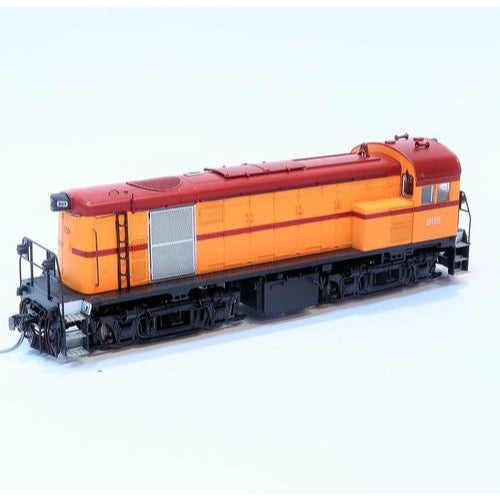
SDS Models HO 809 SAR Traffic Yellow 800 Class Locomotive DCC Sound
Entering service from the mid 1956 onwards these 10 English Electric 750 HP shunting locomotives were numbered from 800 to 809. They were predominantly found working around Port Adelaide and in particular Gilman Yard. Later and from time to time they could also be found working Passenger trains around the suburbs. They remained in service until the late 80s and some units through until 1991, all except 801 were scrapped. When AN commenced operations the class leader 800 was renumbered to 810.
Features
- Highly detailed Ready-to-Run HO gauge model
- Precisely tooled plastic body (ABS)
- Genuine Kadee scale head whisker coupler
- Separately applied handrails and detail parts
- 5-Pole skew wound electric motor and dual flywheels
- All wheel drive and electrical pickup
- LED head and marker lights, body mounted
- All models come standard with an MTC 21 pin motherboard
- Exclusive sound by DCCSound
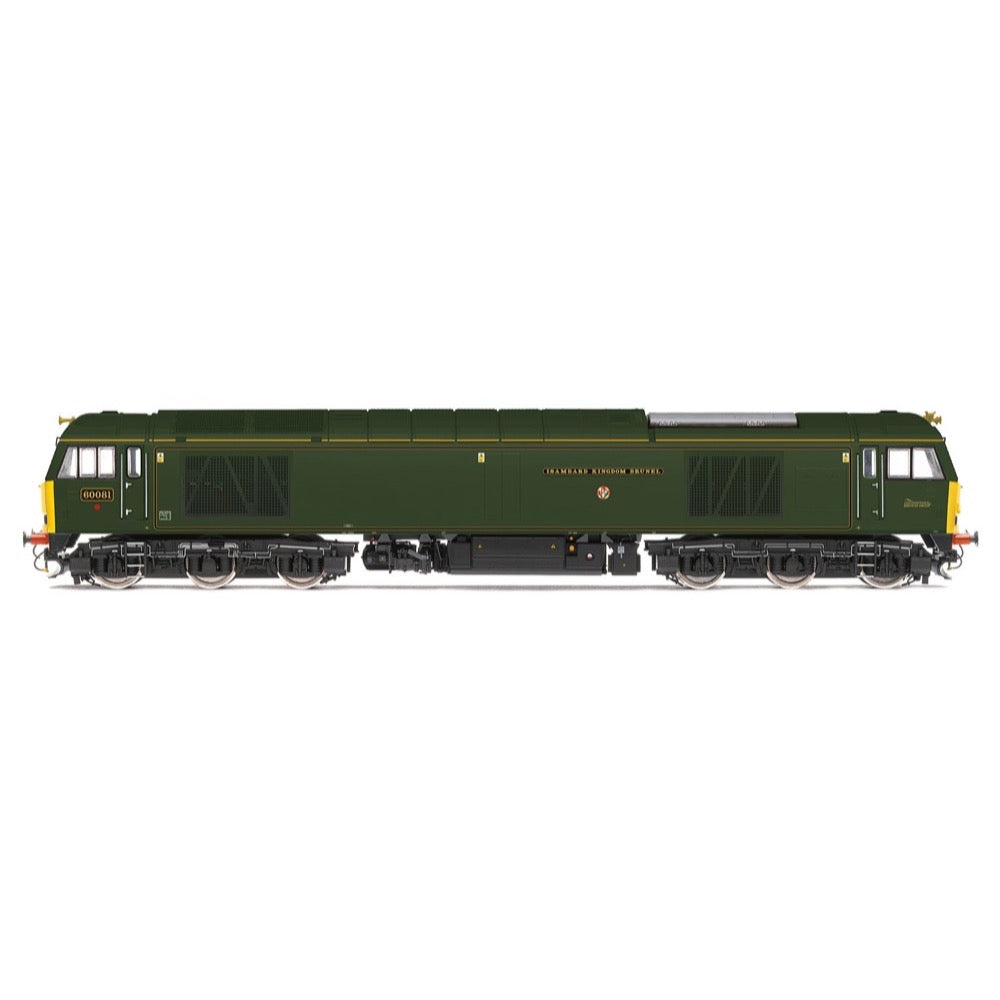
Hornby R30373 OO Class 60 GWR 60081 Isambard Kingdom Brunel The One:One Collection
No. 60081 was built at Brush Traction. The locomotive was delivered in November 1991 with a Trainload Metals Sector livery and 'Bleaklow Hill' as a name. 60081 gained a new lined GWR Brunswick Green livery and it was renamed 'Isambard Kingdom Brunel' on 5 August 2000 at Old Oak Common for the open day. 60081 became the Class 60's 'celebrity' locomotive due to this. In 2020, Locomotive Storage Limited preserved the locomotive for static display and it is currently housed at the Margate One:One Collection.
Specifications
- Item Length - Without Packaging (cm): 28
- Item Height - Without Packaging (cm): 5.7
- Item Width - Without Packaging (cm): 3.5
- Item Weight - Without Packaging: 0.85
- Item Scale: 1:76 Scale 00 Gauge
- License: Yes
- License line: Locomotive Storage Limited
- Finish: Painted
- Colour: Green
- Gauge: OO
- DCC Status: DCC Ready 21 pin socket
- Operator: Locomotive Services Group
- Designer: Brush Traction
- Wheel Configuration: Co-Co
- Livery: GWR Brunswick Green
- Minimu Curve (mm): Radius 2
- Motor: 5 Pole Skew wound
- Number of Parts: 1
- Class: Class 60
- Buffer Type: Metal Sprung Buffers
- Coupling Type: NEM Couplings
- Hornby Decoder Compatibility Primary: HM7000-21TXS: Bluetooth® & DCC Sound Decoder (21-pin)
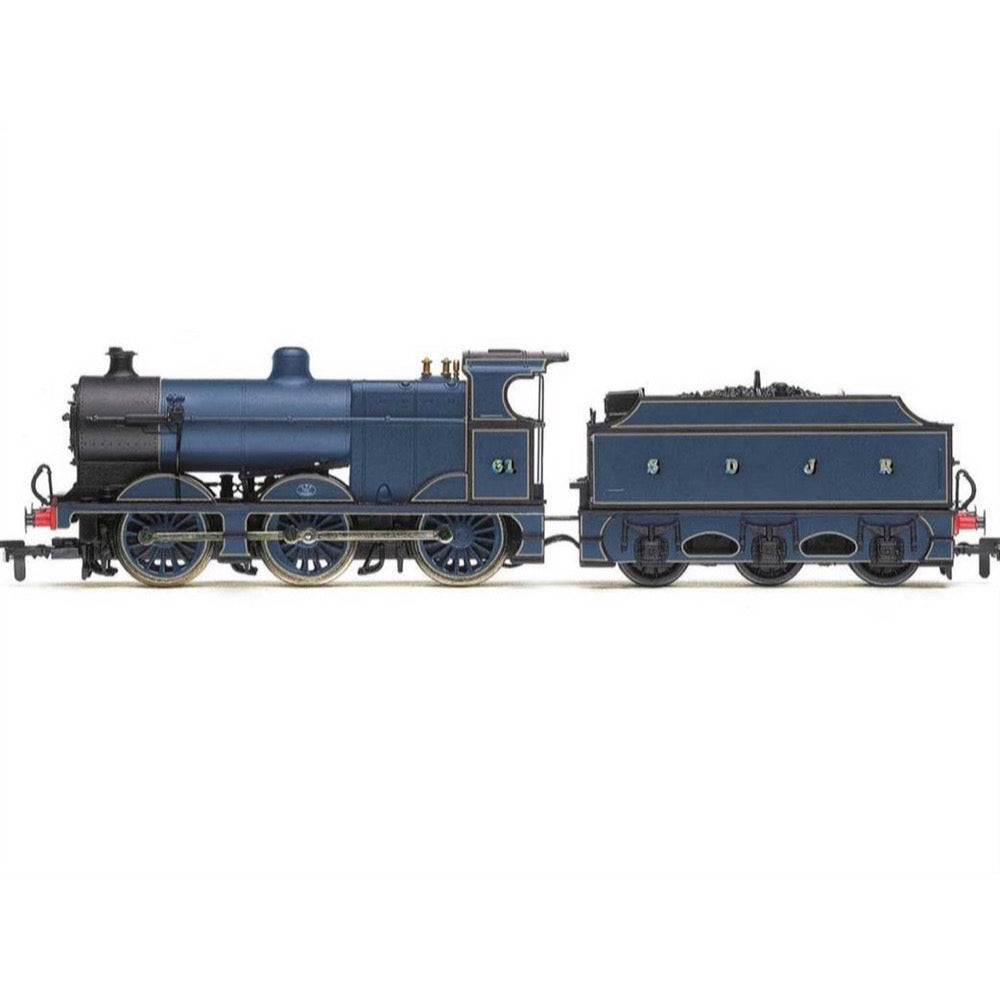
Hornby R30285 OO S&DJR Class 4F 0-6-0 No. 61 Era 2 Locomotive
The LMS 4F class would be introduced in 1911 as the Class 4 to the design of Sir Henry Fowler. Like may of Fowler's designs the locomotive would initially be part of the Midland Railway pool of locomotives before the grouping act would come into effect in 1923.
The Midland Railway was awash with mineral traffic in the early 1900s and the railway did not really have a suitable locomotive up to the task of hauling trains of the lengths that were demanded, as such the MR had a habit of rostering double headed 0-6-0 engines on a near permanent basis. Initially conceived as a 2-6-0 tender engine, the eventual 0-6-0 design would become one of Fowlers most numerous.
The first of the class, 3835 would be built with a Schmidt type superheater with the second in the class being equipped with a Swindon style superheater such was Fowlers interest in the technology and his hunger to incorporate it into his design. Production versions of the 4F would be built between 1917 and 1922 as the MR class 4, 1924 and 1928 as the first of the LMS 4F batch, with a final run being built between 1937 and 1941 as a second LMS batch authorised by William Stanier, although with little enthusiasm from the then CME.
The class would begin to be withdrawn in 1959 with final withdrawals taking place in 1966. Four of the class would be preserved in total with 4027, the first LMS example, preserved as part of the national collection. Only one example of a Midland Railway built 4F would survive into preservation, number 3924.
This locomotive is notable for two reasons, the first being due to its status as the only remaining Midland example and the second being that it was the first locomotive to leave Barry Scrapyard Number 61 was delivered straight to the S&DJR in 1922. The last of five locomotives to be delivered they would receive the internal power classification 5P4G, slightly higher than that given by the Midland Railway and the LMS.
These 5 examples, built in 1922 were built by Armstrong-Whitworth as were all examples constructed in that year. The locomotive would become part of the LMS in 1930 and would receive the number 4561. Just prior to its entry into BR service in 1948 and its renumbering to 44561, the locomotive would be converted to oil burning albeit temporarily. The locomotive would be withdrawn in April 1962 and scrapped with haste after.
The Hornby 4F is a perfect tender engine for someone who has only ever had tank engines. This model is fitted with a three pole motor and gearing allowing for good slow speed performance. The models driving wheels are fitted with traction tyres increasing the tractive effort of the model allowing for more wagons to be hauled.
Specification
- Item Length - Without Packaging (cm): 25
- Item Height - Without Packaging (cm): 5
- Item Width - Without Packaging (cm): 3.5
- Item Weight - Without Packaging: 0.25
- Item Scale: 1:76 Scale 00 Gauge
- Finish: Painted
- Colour: Blue
- Gauge: OO
- DCC Status: DCC Ready 8 pin socket
- Operator: S&DJR
- Designer: Sir Henry Fowler
- Wheel Configuration: 0-6-0
- Livery: SDJR 'Prussian' Blue
- Minimum Curve (mm): Radius 2
- Motor: 3 Pole
- Number of Parts: 1
- Class: Fowler 4P Class
- Buffer Type: Fixed Metal Buffers
- Coupling Type: Non-NEM Pockets


